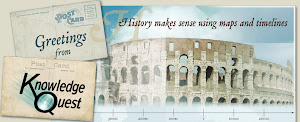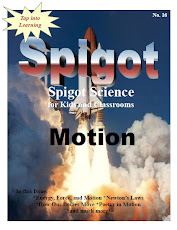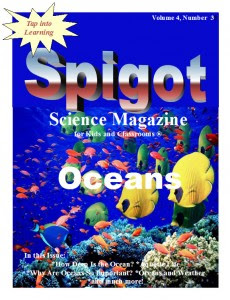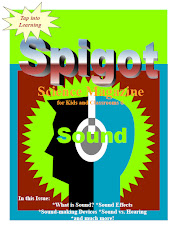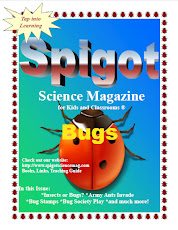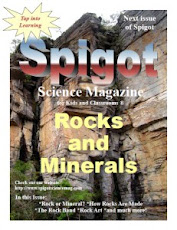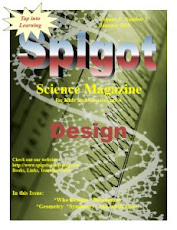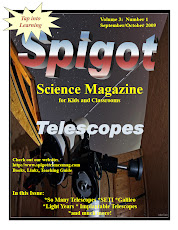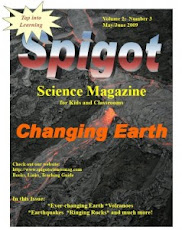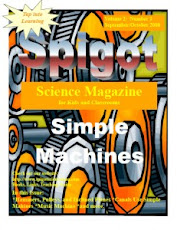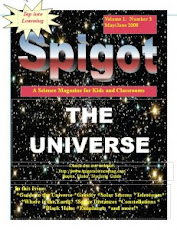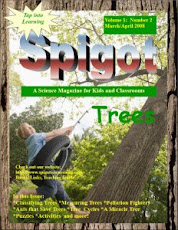Motion engineers are always on the lookout for new ways to capture natural sources of motion and convert then to electricity. Wind turbines have been around for many years; some records show them being used by the Egyptians as early as 3000 BC.
Wind is made up of air, which is a gas. When air moves, it is called wind. Wind turbines work by placing propeller-like rotor blades on tall towers. As the air rushes by, its motion turns the blades. As they turn, the blade motion causes a rod called a shaft that is connected to an electric generator to turn. As electricity is generated, it goes into the electric grid and travels to wherever it is needed. This creation of electricity from moving air is an example of the transfer of energy from one source (moving air) to another (electricity). READ MORE...
Tom looks at his pencil on the top of his desk. It does nothing. It is in a state of rest. He flicks it with his index finger and it rolls to a new place a few inches away. Tom may not realize it, but he is demonstrating one of the most important laws of motion. Objects which are at rest stay at rest until a force acts on them and causes them to move.
Motion Requires Force
Motion does not happen unless there is a force acting on an object. Objects that are in a state of rest resist change. This resistance is called inertia. If there were no forces pushing or pulling objects, everything would be at rest all the time. There would be no movement! When energy creates a force to make an object move, it is call work. If an object is not moving, it is not doing work. But when the object moves, energy has caused its force to do work. READ MORE...
Spigot Science has published its 16th publication. It is all about Motion, an important physics theme in upper elementary and middle schools.
As with all its publications, Motion looks at the theme from an interdisciplinary viewpoint. Among the topics are Newton’s laws, gravity, motion in our bodies, math and motion, poetry in motion and more. There is a short play about Newton’s Law as well as quotes about motion.
The issue is available for download today at the Spigot Science web site. If you are a Premium member you can download Motion as well as 15 other Spigot Science publications and 10 issues of Science in the News. Each membership includes the right to use downloaded materials with one teacher’s classes.
So check out our latest issue, and Tap Into Learning with Spigot Science.
by Maureen Stearns
When it comes to learning math, some students do just fine. Others, unfortunately, seem to hit all the snags and pitfalls while trying to learn.
Why is learning math frustrating for so many? Even those who are considered bright and hardworking have difficulty. Elementary school and high school require math and most college degrees require math too. College classes get bottlenecked with students who are taking the same math class for the second or third time. I've often heard, "I just have to pass this math class or I won't graduate!"
While teaching math to students, I have hypothesized why this occurs and it doesn't have anything to do with intelligence.
When learning math, a student must engage their full attention to the instruction. All it takes is for a student to daydream for a just few minutes and the whole week's key points can be lost to the learner. Not so with other subjects like reading and writing. A student can get away with occasional daydreaming in those subjects and still grasp the week's main point. Students can't get away with that in math. Having an absent mind for just a few minutes in math can produce poor results on tests. Making a dumb mistake on a test in reading does not produce an "F" like it does in math.
Learning math is a sequential process. Learners need to be firm with all the steps that lead up to the final answer and they need to be provided adequate time to process and practice just-taught information before a new concept is introduced. For some students, information presented in math books needs to be broken down into sub-steps that are not found in the textbooks--information that would need to be fine-tuned by the instructor. Unfortunately, because of classroom limits, there just isn't enough time to teach at every student's skill level or to break down math information for those who need it most.
A typical classroom of math students rarely starts on an even academic playing field. The differences and needs can be vast. Because of the abstract nature of mathematics, some students require multi-sensory techniques and extra drill and practice in order to catch on. There simply is not enough time to do this in most classes and if parents are unavailable or don't understand math themselves, the students suffer. It is hard for teachers to meet the needs of all math students, even with their earnest efforts and best intentions. Because of this, many math students never realize their full potential.
While working with students, I have found that the most glaring deficit in math understanding is a skill called "number sense" or the ability to have a feel for mathematical amounts. Students who have developed number sense do much better in math. Weak math students often produce answers that are not even close to being correct. They won't think to challenge whether their answer is logical--an indication they lack number sense.
Good news - even though academic frustration seems rampant, math frustration can be minimized with the help of adults playing math games or activities at home. Math games are fun and are motivating. They develop number sense and actually get kids to want to be involved. There are no class grades tied to the outcome. These activities do not need to be purchased and here's more good news--no tricky math understanding is needed for the adult. Any type of math game holds value and don't let the word "game" make you think that a math game is not academically worthy.
Here are some ideas. Some can be played alone.
- Grab a handful of anything--jellybeans, marbles, paper clips, or pennies--anything that can produce "a bunch of." Have the child guess and write down the estimate, then count to confirm. Hands-on counting is a wonderful activity for students that need tactile validation.
- Find another handful of anything, estimate the amount, and then grab another handful of the same amount. Do the different handfuls hold the same amount?
- How many cereal Os does the child eat each morning?
- What is the value of a handful of pennies, nickels, dimes, or mixed coins?
- Fill three different sized cups with the same item. Estimate and write down how many is in one of them, count, then estimate how many are in the others.
- Look quickly in a drawer, close the drawer and then estimate how many items are in it.
- Estimate amounts in a see-through container. Guess the amount, write it on paper, count to confirm.
- Estimate the weight of a backpack.
- How much time would it take to reach a certain destination?
- Place three pennies on the counter. How many more are needed to make ten pennies? Repeat using different amounts that will equal ten. Put twelve cents on a counter. How much more will make fifty cents?
- How long would it take to earn a certain amount of money?
- How long would it take to earn $1,000 if you earned $5 a day walking the dog?
- How long would it take to spend a million dollars, spending a specific amount each day?
- How many inches would a 100-foot building be?
- Estimate weights of objects, then step on a scale. Fill a bag with items, or a suitcase, estimate the weight.
- Arrange objects heaviest to lightest.
- For older students, determine how many miles they can travel by car for 6 or 8 hours by traveling 55, then 65 miles per hour.
- Finally, discuss the child's strategies used for their estimating.
About the Author;
Maureen Stearns--an author, parent, and educator living in St. Petersburg, Florida--has been teaching struggling learners for over 20 years. She holds both Exceptional Student Education and Community Psychology Degrees. She recently wrote Multiply and Divide with Sticks and Steps®: Teach this Easy Method in Just 5 Minutes, to help students conquer this stumbling block.
To learn more, visit http://www.sticksandsteps.com/ or http://www.ksblinks.com/.
GIVEAWAY
Leave a comment in this blog spot to be entered into my random draw for a copy of
Sticks and Steps
closes Sunday January 22'nd.
Good Luck!
Multiply and Divide with Sticks and Steps
If your child isn't mathematically inclined don't despair there's help. Multiply and Divide with Sticks and Steps is simple, easy and so much fun your child will forget he's learning.
Sticks and Steps is a "multi-sensory method" that will have your child flying through her math homework. The core is "sticks" are represented by vertical lines and "steps" are horizontal lines. With this touch, say and print method your child can easily find the right answer - If you can count, you can multiply.
The author, Maureen Sterans, B.A., M.S. has really hit on something here. I wish this was available when I was struggling through math.
Here's what you can expect to find among the pages of Sticks and Steps;
1. The Basic Method
2. Swap the Sticks with the Steps
3. "Oh no!...A Factor is Missing."
4. "Oh look! I See a Pattern"
5. Multiply Multi-digit Numbers
6. Take a Shortcut
7. Divide Using Sticks and Steps
8. Divide Large Numbers
For Advanced Learners
9. Find the Least Common Multiple (LCM)
10. Easy Doubles and Square Roots
11. Special Rules to Remember
Don't let your child struggle with frustrating math problems, grab a copy of
Multiply and Divide with Sticks and Steps today.
If your child isn't mathematically inclined don't despair there's help. Multiply and Divide with Sticks and Steps is simple, easy and so much fun your child will forget he's learning.
Sticks and Steps is a "multi-sensory method" that will have your child flying through her math homework. The core is "sticks" are represented by vertical lines and "steps" are horizontal lines. With this touch, say and print method your child can easily find the right answer - If you can count, you can multiply.
The author, Maureen Sterans, B.A., M.S. has really hit on something here. I wish this was available when I was struggling through math.
Here's what you can expect to find among the pages of Sticks and Steps;
1. The Basic Method
2. Swap the Sticks with the Steps
3. "Oh no!...A Factor is Missing."
4. "Oh look! I See a Pattern"
5. Multiply Multi-digit Numbers
6. Take a Shortcut
7. Divide Using Sticks and Steps
8. Divide Large Numbers
For Advanced Learners
9. Find the Least Common Multiple (LCM)
10. Easy Doubles and Square Roots
11. Special Rules to Remember
Don't let your child struggle with frustrating math problems, grab a copy of
Multiply and Divide with Sticks and Steps today.
GIVEAWAY!
I HAVE ONE COPY OF STICKS AND STEPS TO GIVEAWAY. ALL YOU HAVE TO DO IS LEAVE A COMMENT IN THIS BLOG SPOT. I WILL DO A RANDOM DRAW ON
SUNDAY, JANUARY 22'ND.
GOOD LUCK!
Investigate how the earth was formed with 15 projects and fun facts in this new title by Nomad Press - Build it Yourself Series.
Introduction - Geology and Geography
Chapter 1 - Plate Tectonics Shape Our Land and SeaChapter 2 - Mountain Ranges
Chapter 3 - Volcanoes and Earhquakes!
Chapter 4 - The Plains
Chapter 5 - Climate
Chapter 6 - Rivers
Chapter 7 - Ecosystems
Chapter 8 - The Great Lakes
Geology of the Great Plains and Mountain West is an excellent, educational book. And, as with all Nomad Press Build it Yourself books, Great Plains includes tonnes of informative facts and fun do-it-yourself projects.
Check out, Make Your Own Popcorn Time p.g. 18, Make Your Own Needle-Like Crystals p.g. 58 and my personal favorite, Make Your Own Grassy "Tree" p.g. 96
Parents, you can't go wrong with this book! It's packed with so many things to do and explore, your child will forget it's totally educational.
Nomad Press is on the web at; http://www.nomadpress.net/
Red breasted robins are a classic symbol of the winter months and have adorned Christmas cards for over a century. Ornithologists studying the feathers of the European robin (Erithacus rubecula) have discovered that the red breast reveals more than simply the species of the owner. The findings, published in IBIS, reveal how the famous red breast varies in size and colouration over ages and sexes, suggesting it may be used to communicate features of the owner to other robins.
The research, led by Dr. Roger Jovani from Estación Biológica de Doñana (Spanish National Research Council, CSIC) in Sevilla, follows in the footsteps of renowned ornithologist David Lack, who studied the behaviour of robins in the 1940’s. Lack recorded that a violent hen robin attacked a headless stuffed specimen, leading him to discover that it was the red breast which triggered the aggression.
“After more than six decades, we still have a very limited understanding of the important information robins may communicate through the red breast,” said Dr Jovani. “Our study sought to understand how its size differs according to age and sex. Also, we studied the role of the grey fringe that frames the robin’s red breast, which has been largely overlooked.”
The research, carried out at a pine forest north of the Catalan city of Barcelona focused on the sexual dimorphism and trends in red breast size when robins age. Juvenile robins which have recently left the nest wear a brownish plumage, lacking the distinctive red breast. This is achieved some months later during their first summer moult.
The robin moults again in the second summer of life and this, the team predicted, leads to a larger red breast. As both male and female robins defend territory all year round the team expected that both sexes would have similarly sized red breasts and grey fringes.
The team’s results revealed unknown patterns of variation in the red breast and grey fringe of the robin. The size of the red breast was found to increase from the first to the second year in both males and females. However, old males showed consistently larger badges than old females after their second year.
This surprising variation across sexes and over time suggests that the red breast may convey information of sex, age or related condition-dependent traits. Moreover, researchers applied computer models that take into account environmental luminosity and bird sensitivity to study the colour contrast between feathers as seen by a robin. They found that the grey fringe, which increases in age, highlights the perimeter of the red breast.
“Our study is a first step in understanding the role of the red breast and the grey frame in the life of robins,” concluded Dr Jovani. “Further studies will likely show more surprises on the role of the redbreast and its grey frame on resolving territorial contests and mating decisions in robins”.
Jovani. R, Avilés. J.M., Rodríquez-Sánchez. F, “Age-related patterns of sexual plumage dimorphism in the European Robin Erithacus rubecula”, IBIS, Wiley-Blackwell
About the Journal:IBIS publishes original papers, reviews and short communications reflecting the forefront of research activity in ornithological science, but with special emphasis on the conservation, ecology, ethology and systematics of birds. Ibis aims to publish as rapidly as is consistent with the requirements of peer-review and normal publishing constraints. Journal URL: http://onlinelibrary.wiley.com/journal/10.1111/(ISSN)1474-919X
About Wiley-Blackwell:Wiley-Blackwell is the international scientific, technical, medical, and scholarly publishing business of John Wiley & Sons, with strengths in every major academic and professional field and partnerships with many of the world’s leading societies. Wiley-Blackwell publishes nearly 1,500 peer-reviewed journals and 1,500+ new books annually in print and online, as well as databases, major reference works and laboratory protocols. For more information, please visit http://www.wileyblackwell.com/ or our new online platform, Wiley Online Library (wileyonlinelibrary.com), one of the world’s most extensive multidisciplinary collections of online resources, covering life, health, social and physical sciences, and humanities.
The research, led by Dr. Roger Jovani from Estación Biológica de Doñana (Spanish National Research Council, CSIC) in Sevilla, follows in the footsteps of renowned ornithologist David Lack, who studied the behaviour of robins in the 1940’s. Lack recorded that a violent hen robin attacked a headless stuffed specimen, leading him to discover that it was the red breast which triggered the aggression.
“After more than six decades, we still have a very limited understanding of the important information robins may communicate through the red breast,” said Dr Jovani. “Our study sought to understand how its size differs according to age and sex. Also, we studied the role of the grey fringe that frames the robin’s red breast, which has been largely overlooked.”
The research, carried out at a pine forest north of the Catalan city of Barcelona focused on the sexual dimorphism and trends in red breast size when robins age. Juvenile robins which have recently left the nest wear a brownish plumage, lacking the distinctive red breast. This is achieved some months later during their first summer moult.
The robin moults again in the second summer of life and this, the team predicted, leads to a larger red breast. As both male and female robins defend territory all year round the team expected that both sexes would have similarly sized red breasts and grey fringes.
The team’s results revealed unknown patterns of variation in the red breast and grey fringe of the robin. The size of the red breast was found to increase from the first to the second year in both males and females. However, old males showed consistently larger badges than old females after their second year.
This surprising variation across sexes and over time suggests that the red breast may convey information of sex, age or related condition-dependent traits. Moreover, researchers applied computer models that take into account environmental luminosity and bird sensitivity to study the colour contrast between feathers as seen by a robin. They found that the grey fringe, which increases in age, highlights the perimeter of the red breast.
“Our study is a first step in understanding the role of the red breast and the grey frame in the life of robins,” concluded Dr Jovani. “Further studies will likely show more surprises on the role of the redbreast and its grey frame on resolving territorial contests and mating decisions in robins”.
Jovani. R, Avilés. J.M., Rodríquez-Sánchez. F, “Age-related patterns of sexual plumage dimorphism in the European Robin Erithacus rubecula”, IBIS, Wiley-Blackwell
About the Journal:IBIS publishes original papers, reviews and short communications reflecting the forefront of research activity in ornithological science, but with special emphasis on the conservation, ecology, ethology and systematics of birds. Ibis aims to publish as rapidly as is consistent with the requirements of peer-review and normal publishing constraints. Journal URL: http://onlinelibrary.wiley.com/journal/10.1111/(ISSN)1474-919X
About Wiley-Blackwell:Wiley-Blackwell is the international scientific, technical, medical, and scholarly publishing business of John Wiley & Sons, with strengths in every major academic and professional field and partnerships with many of the world’s leading societies. Wiley-Blackwell publishes nearly 1,500 peer-reviewed journals and 1,500+ new books annually in print and online, as well as databases, major reference works and laboratory protocols. For more information, please visit http://www.wileyblackwell.com/ or our new online platform, Wiley Online Library (wileyonlinelibrary.com), one of the world’s most extensive multidisciplinary collections of online resources, covering life, health, social and physical sciences, and humanities.















